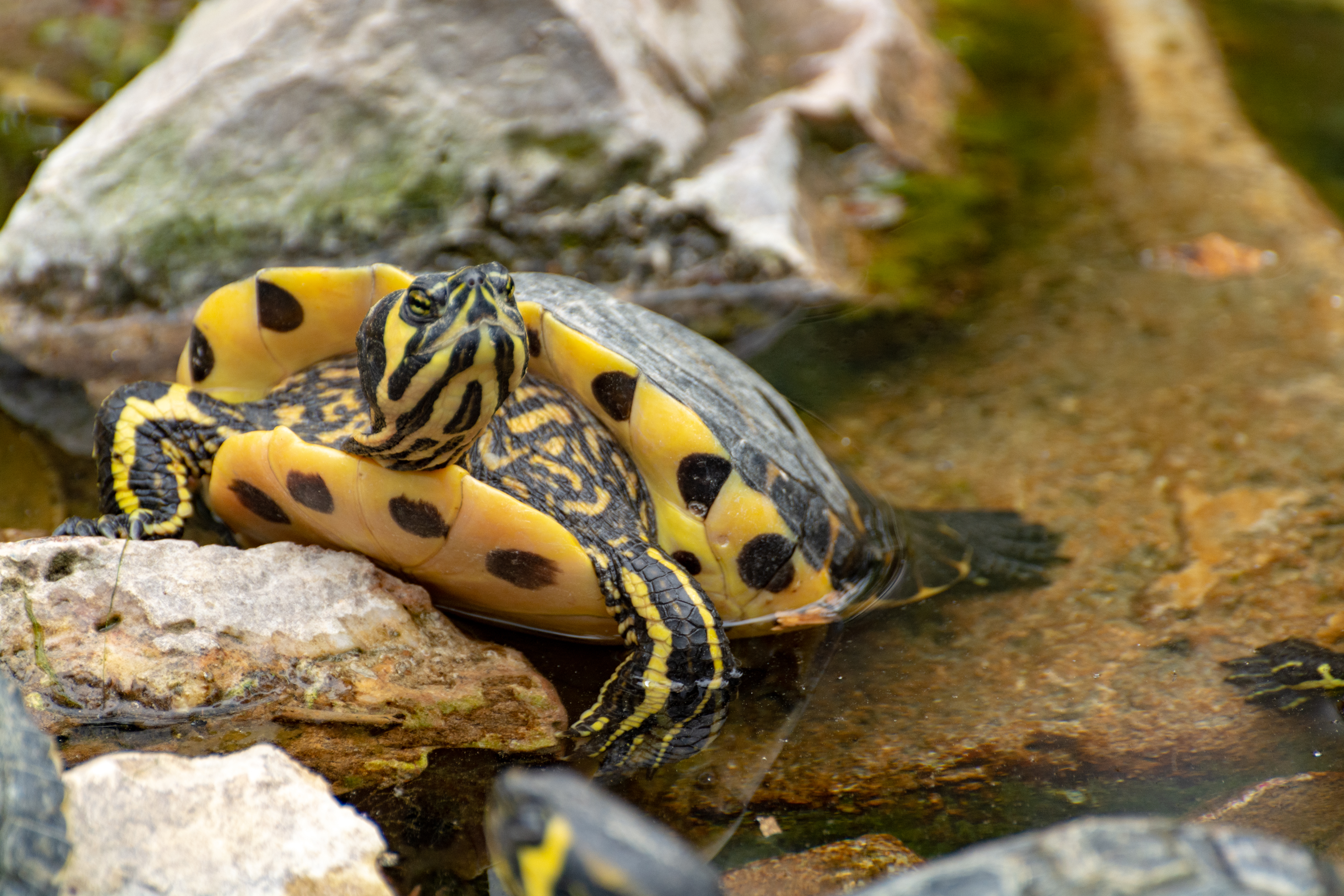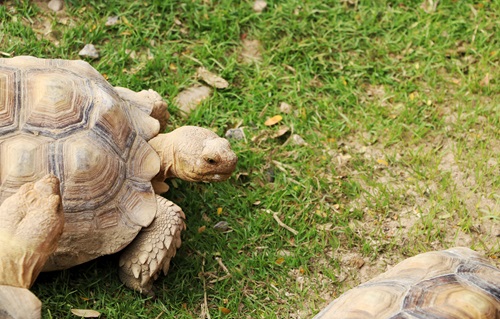Are Turtles Reptiles?
Reptiles are cold-blooded animals with scales and a three chambered heart. Turtles fit that description, making them reptiles, but they are so much more than that. From forests to lakes to oceans, turtles are found almost everywhere on earth.
Turtle or Tortoise?
When people talk about turtles, we often think about the shelled reptiles that live an aquatic or semi-aquatic life. Tortoises are usually considered land-dwelling, or terrestrial. A trick to tell them apart is to look at the feet. If they have webbed back feet, you have an aquatic or semi-aquatic turtle. If the back feet are more elephant-like or have toes without webbing, it is likely a tortoise or box turtle.

What Exactly is a Turtle?
Turtles are a type of reptile and belong to the taxonomic order Chelonia. Like other reptiles, they are cold-blooded, or ectothermic, and poikilothermic. That means that they cannot maintain their body temperature. Creating the right temperature gradients in captivity is important and crucial to the health of turtles. Internal body temperatures rise and fall with the temperature of their surroundings. This is why reptiles, even turtles, spend so much of their time basking in the sunlight and on surfaces that hold heat such as rocks. Basking allows them to absorb the warmth of the sun and achieve their optimal internal temperature. The top of the shell holds heat inside effectively allowing turtles to maintain the necessary body temperature even in cooler waters. The optimal preferred temperature allows turtles to digest their food and have the energy to move. The shell is one of the most distinguishing features of turtles and also serves as a means of protection. Turtles also don’t have teeth. Their jaws are made of an upper and lower beak with the shape differing across nearly all species depending on the type of food they eat. The beak of an Alligator Snapping Turtle has two large sharp peaks at the front of it for holding onto fish prey it ambushes, while the beak of a Green Sea Turtle has much less of a peak and has serrated edges for cutting vegetation.
House of Bones
What makes a turtle unique from other reptiles is its shell. This adaptation evolved in the late Jurassic period over 150 million years ago. The shell is made of three main areas: the carapace (the top); the plastron (the bottom); and the bridge (the connection between the two). Internally, the vertebrae and ribs are part of the inner layer of the shell, which is made of up of around 60 bones. Unfortunately, this also means the cartoons we grew up with where the turtle leaves his shell were fun but fiction. Streamlined shells are an indication of a species that swims such as a sea turtle or slider turtle, while deep domed shells are a characteristic of a land-dwelling species like a box turtle. Even the shape and texture of the shell’s scales, called scutes, can tell you if it’s a species that swims quickly or spends its time sitting on the bottom of the pond. While the shell provides a sort of mobile home for the turtle, the main reason this adaptation is so important is its ability to protect the turtle from predators. In box turtles, the front and back portions of the plastron have hinges that allow them to seal themselves completely inside their shell.
Don’t Stick Your Neck Out
While a turtle’s shell turns a tenacious turtle into a tiny tank, they still need to push their head out to see and breathe. Turtles have two main methods for protecting their head and neck. The most common method is to pull the head straight back into the shell. The spine hinges at the front inside of the plastron and allows for the neck to curl under itself as the head comes into the shell. The other method involves pulling the head to the side of the shell. Side-Neck and Snake-Neck Turtles are the most common example of this type of head movement. Space is made in the shell by folding the neck back and forth like an accordion, leaving the neck and head at the front of the shell partially exposed.

Arms, Their Good for the Lungs
Arms and legs are something we’re used to seeing. They help us and animals move and it’s no different with turtles. They push their arms out of their shell to paddle or swim through the water or to climb over another rock on a warm hillside. When a predator comes near, they pull themselves completely into their shell for safety. There’s one problem with a turtle spending too much time with his arms pinned into his shell. Without being able to move their shoulders, they are unable to expand their lungs and breath. Think of it like the handle on a bellow. Luckily, they can hold their breaths for quite a while, much longer than the attention span of a predator. This is important to keep in mind when keeping a turtle. Whether it’s designing their habitat or transferring them to the vet for a checkup, make sure they cannot pin themselves somewhere where they can’t move their arms out of their shell.
Long-Lived Personable Companions
Turtles can be some of the most quirky, interesting, and personable species of reptiles to keep as pets. Whether it’s learning when it’s feeding time and taking food from your fingers or jumping into the water enthusiastically to swim towards you, turtles learn behaviors from interacting with you. These long-lived companions can be a lot of work and many can get very large. Even a Red Eared Slider that starts at the size of a quarter will grow into a large turtle that requires a large aquarium or pond set-up. There are also local, state, and federal laws that may restrict what types of turtles you can keep. Make sure before bringing a turtle home that you have done as much research as possible! For more information, check out some of our Care Sheets.
